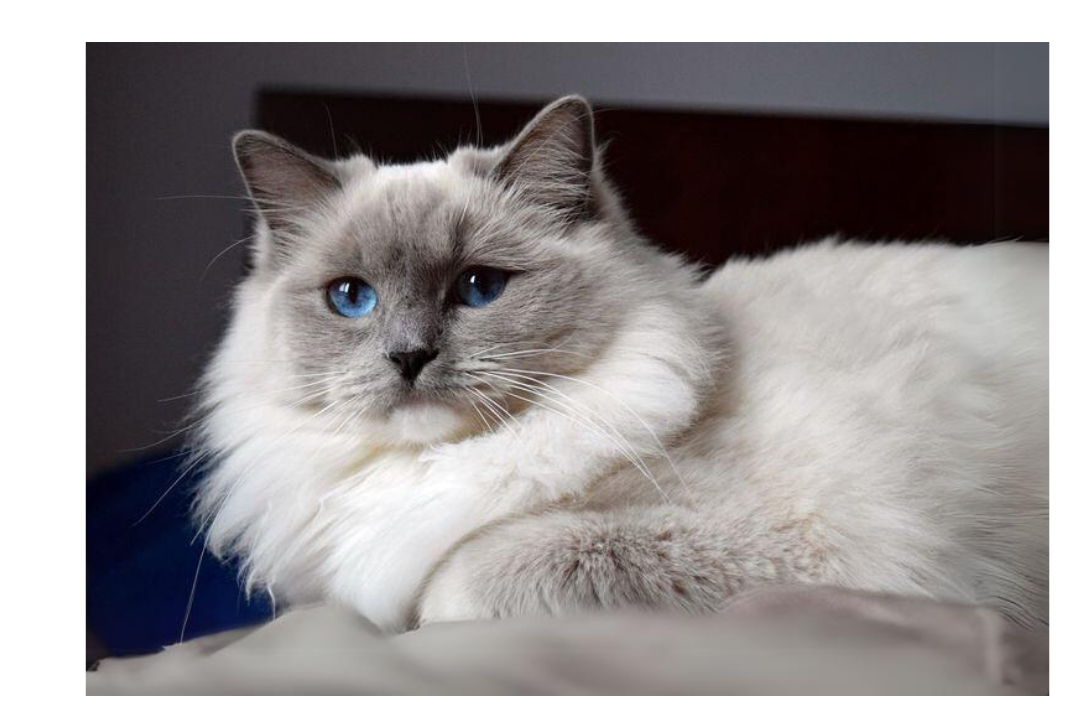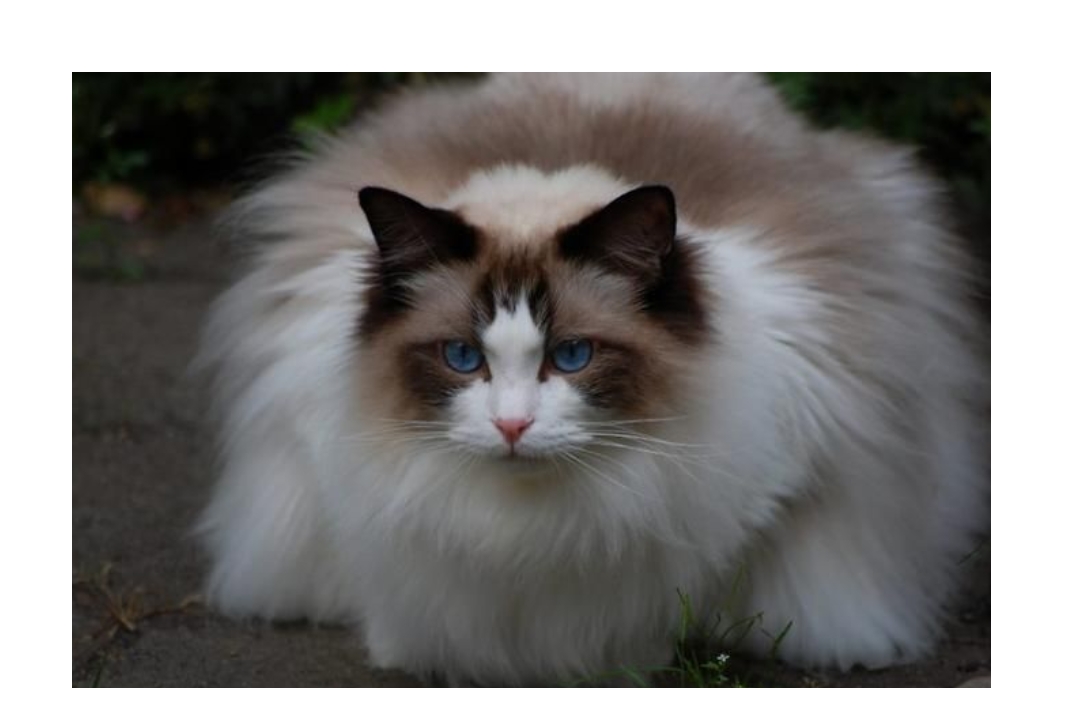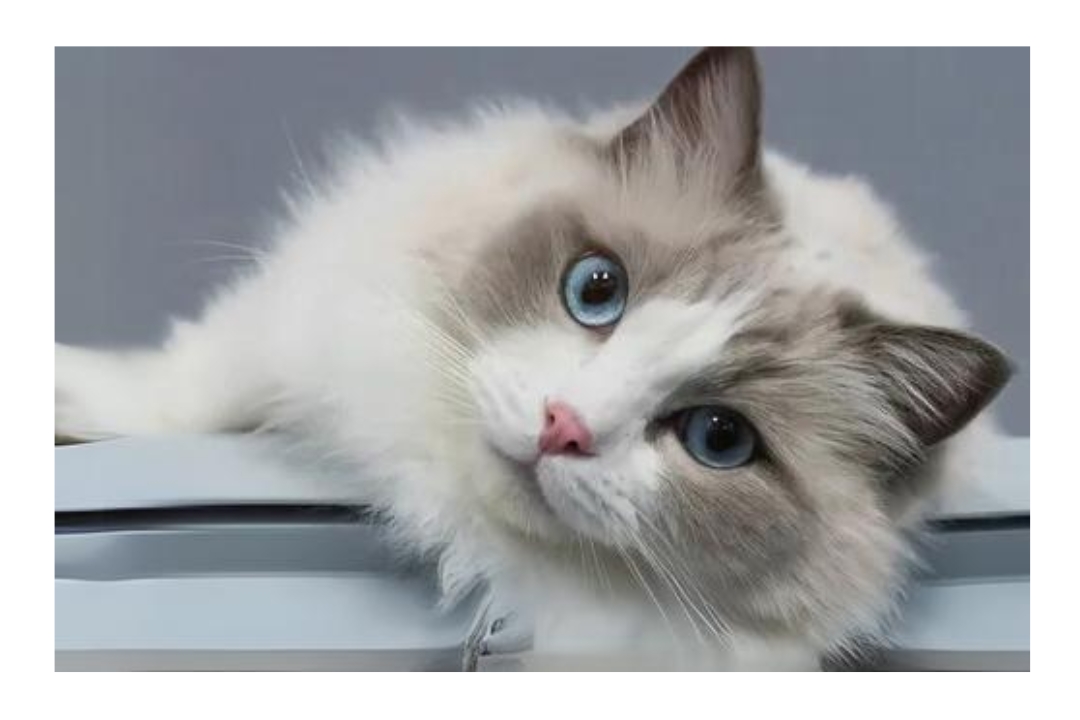The Enchanting Ragdoll Cat: A Perfect Companion 05
Origins and History
The Ragdoll breed was created in the mid 1960s by Ann Cook, a raiser in Riverside, California. The variety’s establishment feline, Josephine, was a white homegrown long-haired feline that Pastry specialist accepted had novel, delicate characteristics. After an auto crash, Josephine’s ensuing cats showed the casual, meek nature that would turn into the sign of the Ragdoll breed. Pastry specialist specifically reared these felines to improve these characteristics, and consequently the Ragdoll was conceived.
Physical Characteristics
Ragdolls are huge, solid felines with a tough edge and delicate, rich fur. They normally weigh between 10 to 20 pounds, with guys frequently being bigger than females. Their fur, while thick, isn’t inclined to matting and requires moderate preparing to keep it putting its best self forward.
Temperament and Personality
The Ragdoll feline is frequently portrayed as a “pup like” feline because of its well disposed and friendly nature. Dissimilar to numerous other feline varieties, Ragdolls are known to pursue their proprietors around the house, welcome them at the entryway, and even appreciate being held and conveyed. This breed’s name, “Ragdoll,” comes from their inclination to go limp and loose when gotten, similar as a youngster’s ragdoll toy.
Ragdolls are unimaginably friendly and partake in the organization of the two people and different pets. They are known for being patient and open minded, making them magnificent allies for families with kids or different creatures. Their laid-back character implies they are less inclined to be irritated by clearly commotions or changes in their current circumstance, in spite of the fact that they actually favor a steady, cherishing home.
Health and Care
Hypertrophic cardiomyopathy (HCM), a typical coronary illness in felines, can happen in Ragdolls, so customary veterinary check-ups are fundamental.
Preparing a Ragdoll is somewhat simple contrasted with other longhaired breeds. Their fur doesn’t mat effectively, however customary brushing assists with diminishing shedding and keeps their jacket in top condition. Furthermore, Ragdolls appreciate prepping meetings, which can be a holding experience between the feline and its proprietor.
Because of their quiet and loving nature, Ragdolls truly do well in indoor conditions. They are not generally so audacious or autonomous as a few different varieties, so keeping them inside safeguards them from expected risks as well as suits their personality.

Behavior and Social Interaction
felines are much of the time depicted as perhaps of the most individual arranged feline varieties. They blossom with human connection and are known to areas of strength for shape with their proprietors. Dissimilar to many felines that can be free and detached, Ragdolls appreciate being in the organization of their relatives. They are known for following their proprietors from one space to another, frequently searching out warmth and consideration.
One of the most charming characteristics of Ragdolls is their propensity to go limp when held, a way of behaving that has procured them their name. This quality makes them especially simple to deal with, and they are much of the time more open minded toward being gotten and nestled contrasted with different varieties. This compliance likewise stretches out to their communications with different pets, settling on them an incredible decision for multi-pet families.
In spite of their casual nature, Ragdolls are energetic and inquisitive. They appreciate intuitive toys, and some even appreciate playing get, similar as a canine. Their delicate disposition makes them appropriate for families with youngsters, as they are patient and less inclined to scratch or nibble in light of harsh taking care of.
Communication and Vocalization
Ragdolls are by and large calm felines, with delicate, melodic voices. They are not so vocal as breeds like the Siamese, but rather they will speak with their proprietors through delicate howls, murmurs, and trills. Ragdolls frequently utilize these sounds to communicate satisfaction, request consideration, or sign when they need something, like food or recess. Their open nature adds to their appeal, making them straightforward and bond with.

Grooming and Maintenance
While Ragdolls have a sumptuous coat, their fur is shockingly low-upkeep contrasted with other longhaired breeds. Their jacket misses the mark on thick undercoat that is normal in some lengthy haired felines, which lessens the probability of matting. A week after week brushing meeting is generally adequate to keep their fur looking great, forestall tangles, and decrease shedding.
Ragdolls appreciate prepping and frequently consider it to be a chance for holding with their proprietors. This routine can be a quieting experience for both the feline and the proprietor, as Ragdolls ordinarily partake in the consideration and will frequently murmur cheerily during preparing meetings.
Notwithstanding customary brushing, Ragdolls need essential prepping care, for example, nail managing, ear cleaning, and dental consideration. Their nails ought to be managed like clockwork to forestall abundance and possible uneasiness. Their ears ought to be checked routinely for soil or wax development, and their teeth ought to be cleaned or really focused on with dental treats to keep up with oral wellbeing.
Health Considerations
While are by and large strong and solid, they are helpless to specific genetic circumstances. One of the main worries for felines is Hypertrophic Cardiomyopathy (HCM), a heart condition that can be acquired. Reproducers must evaluate their rearing felines for HCM to diminish the gamble of giving the condition to little cats.
Ragdolls can likewise be inclined to urinary plot issues and corpulence, especially on the off chance that they are overloaded or not offered an adequate number of chances for work out. To keep a Ragdoll solid, it is critical to give a reasonable eating routine and draw in them in normal play to keep a sound weight.
Routine veterinary check-ups are fundamental for observing the strength of a feline. Standard inoculations, parasite counteraction, and dental check-ups will assist with guaranteeing that they carry on with a long, solid life.
Ideal Living Conditions
Ragdolls are indoor felines naturally. Their delicate demeanor and absence of road smarts make them less fit to the risks of open air life, like traffic, hunters, and openness to sicknesses. They are most joyful in a protected, agreeable indoor climate where they can unwind and partake in the organization of their human family.
Giving an assortment of toys, scratching posts, and comfortable spots for relaxing will keep a engaged and content. They additionally appreciate window roosts where they can watch birds and other outside exercises. While they are for the most part low-energy felines, they actually value standard recess to keep them intellectually and genuinely invigorated.
Bonding and Emotional Needs
Ragdolls are friendly felines that hunger for friendship. They are known to be delicate to their proprietors’ feelings and can frequently be found contribution solace when they sense that their human is disturbed or pushed. This profound close to home association makes them fantastic daily encouragement creatures.
Ragdolls could do without being abandoned for significant stretches and may become desolate or restless on the off chance that they don’t get sufficient consideration. For proprietors who are away from home oftentimes, it very well may be smart to consider getting a subsequent feline or pet to stay with the Ragdoll.

The Ragdoll Cat: A Deeper Dive into Their Alluring World
Ragdoll felines are something beyond their appearance and demeanor; they have an interesting history, fascinating ways of behaving, and explicit consideration prerequisites that make them one of the most extraordinary and cherished feline varieties. To really see the value in the profundity of this variety, it’s fundamental to investigate their starting point, preparing potential, and the subtleties of their way of behaving and wellbeing.
The Unique History of the Ragdoll Cat
The history of the feline is both fascinating and a piece secretive. Ann Dough puncher, the variety’s maker, was known for her unusual convictions about the variety’s turn of events. She guaranteed that Josephine, the first feline from which all Ragdolls slipped, had been exposed to a mysterious government hereditary examination that gave her little cats their unmistakably loose, submissive nature. While this guarantee is broadly viewed as a legend, it adds a fascinating layer to the variety’s set of experiences.
What is sure, notwithstanding, is that Dough puncher was incredibly defensive of the variety. She reserved the name “Ragdoll” and kept up with severe command over its reproducing to guarantee that the felines satisfied her guidelines. This degree of control at first eased back the spread of the variety, yet it additionally settled the Ragdoll’s steady demeanor and appearance. Over the long run, as the variety acquired fame, more reproducers started working with Ragdolls, growing their genetic supply and guaranteeing their wellbeing and imperativeness.
Behavioral Quirks and Intelligence
felines are known for their accommodating nature, yet they additionally have a few interesting conduct peculiarities that put them aside from different varieties. One of these is their propensity to “flop” when gotten or held. This trademark isn’t simply an actual response yet in addition a sign of their trust and solace with their human mates. Maybe the Ragdoll is saying, “I trust you totally, and I’m glad to loosen up in your arms.”
As far as insight, Ragdolls are speedy students. They can be prepared to perform stunts, stroll on a rope, and even utilize the latrine with the right direction and persistence. Their knowledge is frequently misjudged because of their laid-back attitude, however they are fit for figuring out schedules, perceiving their names, and answering orders. This teach ability, joined with their tender nature, causes them astounding allies for the people who to appreciate drawing in with their pets in intelligent ways.
Ragdolls are additionally known for their capacity to adjust to different conditions. Whether in a clamoring family with youngsters and different pets or in a calmer, more single climate, they will quite often change well. This flexibility is one reason why Ragdolls are frequently suggested for first-time feline proprietors.
The Social Butterfly of the Feline World
Ragdolls are outgoing people in the catlike world, hankering human association and friendship. They are frequently depicted as “canine like” in their unwaveringness and want to accompany their proprietors. Dissimilar to additional free varieties, Ragdolls are most joyful when they are associated with their family’s exercises. They are known to follow their proprietors from one space to another, frequently settling down in a similar room just to be close.
This breed’s social nature reaches out to their associations with different pets. Ragdolls for the most part coexist well with different felines and canines, particularly when presented appropriately. They will more often than not be non-forceful and really like to stay away from struggle, settling on them a phenomenal decision for multi-pet families.
likewise have a remarkable approach to imparting their love. They might nestle their heads against you, offer delicate paw taps, or just twist up in your lap to show their affection. Their delicate and loving nature makes them especially helpful for the people who might be feeling worried or desolate.
Grooming: More Than Just Maintenance
While Ragdolls are known for their simple to-oversee coats, preparing them is something beyond an upkeep task; it’s a holding experience. Their delicate, extravagant fur feels rich to the touch, and numerous Ragdolls appreciate being brushed. Customary preparing meetings assist with forestalling shedding and matting and act as an exceptional time for yourself as well as your Ragdoll to interface.
During preparing, it’s likewise a great opportunity to check for any indications of medical problems. Search for any protuberances, knocks, or skin disturbances that might require a vet’s consideration. Standard prepping helps keep your skin and coat solid and permits you to screen their general prosperity.
As well as brushing, ordinary ear cleaning, dental consideration, and nail managing are significant parts of prepping. are for the most part agreeable during these exercises, making them moderately low-support contrasted with other longhaired breeds.
Health and Longevity
Another condition that can influence Ragdolls is Polycystic Kidney Illness (PKD), despite the fact that it is less normal in this variety. Customary veterinary check-ups are pivotal for early location and the executives of any potential medical problems.
All things considered, Ragdolls live between 12 to 17 years, with some living significantly longer with appropriate consideration. Their life span is impacted by their hereditary qualities, diet, and in general consideration. Giving a top notch diet, customary activity, and mental excitement can assist with guaranteeing your Ragdoll carries on with a long, solid life.

The Ideal Home for a Ragdoll
flourish in conditions where they get a lot of consideration and friendship. They are great for families, singles, and seniors the same, as they adjust well to various ways of life. Nonetheless, they are not fit to outside living because of their believing nature and absence of road smarts. An indoor climate where they can have a solid sense of security and cherished is great.
On the off chance that you’re away from home frequently, consider getting an ally for your Ragdoll, whether it’s another feline, a canine, or even guaranteeing they have a lot of toys and exercises to keep them engaged. don’t need over the top space, yet they in all actuality do value having different spots to unwind, climb, and notice their environmental elements.
The Emotional Depth of Ragdolls
One of the most striking parts of Ragdolls is their close to home profundity. They appear to have an inborn capacity to detect their proprietor’s state of mind and proposition solace during troublesome times. Numerous Ragdoll proprietors portray their felines as being especially instinctive, frequently nestling dependent upon them when they are feeling miserable or pushed.
This profound association makes fantastic treatment creatures. Their quiet disposition and loving nature can furnish enormous solace to those managing nervousness, sorrow, or depression. The friendship of a Ragdoll can be unquestionably mending, offering unqualified love and backing.
Conclusion
felines are a variety like no other, consolidating dazzling excellence with an inspiring character. Their tender nature, insight, and flexibility make them ideal allies for a large number of individuals. Whether you’re searching for a faithful companion, a fun loving sidekick, or a mitigating presence, the Ragdoll feline can satisfy this multitude of jobs and that’s just the beginning.
Possessing a is a remunerating experience that gives pleasure, solace, and friendship into your life. Their interesting qualities, combined with their delicate and cherishing nature, make them a really unique variety that keeps on catching the hearts of feline darlings all over the planet. With the right consideration, consideration, and love, a feline will be a valued individual from your family for a long time.
Frequently Asked Questions About Ragdoll Cats
1. What is the temperament of a Ragdoll cat?
Ragdoll cats are known for their gentle, calm, and affectionate temperament. They are often described as “puppy-like” because they enjoy following their owners around, are highly social, and are very tolerant of being held and cuddled.
2. Do cats get along well with children and other pets?
Yes, Ragdoll cats are typically very friendly and get along well with children and other pets. Their patient and non-aggressive nature makes them an excellent choice for families with kids, as well as households with other cats or dogs.
3. How much grooming does a Ragdoll cat require?
Ragdoll cats have semi-long, silky fur that is relatively low-maintenance compared to other longhaired breeds. Regular brushing, about once or twice a week, helps prevent tangles and reduces shedding. They also enjoy grooming sessions, which can be a bonding experience.
4. Are cats indoor or outdoor cats?
Ragdoll cats are best suited to an indoor lifestyle. Their trusting and laid-back nature makes them less equipped to handle the dangers of outdoor life, such as traffic, predators, and exposure to diseases. They thrive in a safe, indoor environment.
5. Do cats have any specific health concerns?
s are generally healthy cats but can be prone to certain genetic conditions, such as Hypertrophic Cardiomyopathy (HCM), a type of heart disease. Regular veterinary check-ups and screenings are important to monitor their health.
6. How big do cats get?
cats are a large breed. Adult males typically weigh between 15 to 20 pounds, while females are slightly smaller, ranging from 10 to 15 pounds. They also have a long, muscular body with a sturdy frame.
7. What is the average lifespan of a cat?
The average lifespan of a Ragdoll cat is between 12 to 17 years. With proper care, including a healthy diet, regular veterinary visits, and plenty of love and attention, some Ragdolls can live even longer.
8. Are cats easy to train?
Yes, Ragdoll cats are intelligent and can be trained to perform tricks, use a litter box, and even walk on a leash. Their willingness to please their owners makes them relatively easy to train compared to other cat breeds.
9. Why are Ragdoll cats called “Ragdolls”?
cats got their name because of their tendency to go limp and relaxed when picked up, much like a toy. This characteristic is one of the breed’s most endearing traits and a key reason for their name.
10. Do cats shed a lot?
cats do shed, but not as much as some other longhaired breeds. Regular brushing can help manage shedding, keeping their coat in good condition and reducing the amount of loose fur in your home.
11. Are cats vocal?
cats are generally quiet and have soft, melodic voices. They are not as vocal as some other breeds, like the Siamese, but they will communicate with gentle meows, purrs, and chirps, especially when they want attention.
12. How much exercise do cats need?
While Ragdolls are more laid-back than some other breeds, they still need regular exercise to stay healthy. Interactive play sessions, toys, and opportunities to climb or explore will help keep them physically and mentally stimulated.
13. Can Ragdoll cats be left alone for long periods?
Ragdoll cats are social and prefer to be around their human companions. They do not do well when left alone for extended periods and may become lonely or anxious. If you’re often away from home, consider getting a companion for your Ragdoll or providing plenty of toys and activities to keep them occupied.
14. How can I ensure my cat lives a long and healthy life?
To ensure your Ragdoll cat lives a long, healthy life, provide a balanced diet, regular veterinary care, plenty of exercise and mental stimulation, and lots of love and attention. Regular grooming and monitoring for any signs of health issues are also important.
15. What colors and patterns do cats come in?
Ragdoll cats come in various color patterns, including color point, mitted, and bicolor. Common colors include seal, blue, chocolate, and lilac. Their striking blue eyes are a hallmark of the breed, adding to their captivating appearance.
